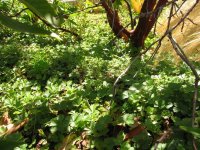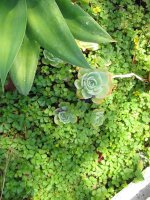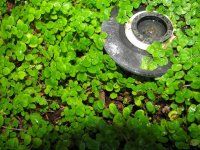S
Scrappy-doo
I decided to put a layer of mulch down for 2 small plots with multiple plants that I have outdoors. I used just native grass on one, and I used native grass, plus a little bit of wood chips on the other.
After 2 days, the one with the wood chips had white fuzzy mold growing on the soil, covering practically the entire surface and nearly killing the plants there. I actually lost a couple. Most were saved. I took that crap off and tilled the soil. Hopefully it will be ok.
The one with just a very light layer of grass was fine.
What I noticed is that in the one with the wood chips the top layer of soil was very moist while the other one the soil was dry. I guess too moist. But isn't that the purpose of mulch?
After 2 days, the one with the wood chips had white fuzzy mold growing on the soil, covering practically the entire surface and nearly killing the plants there. I actually lost a couple. Most were saved. I took that crap off and tilled the soil. Hopefully it will be ok.
The one with just a very light layer of grass was fine.
What I noticed is that in the one with the wood chips the top layer of soil was very moist while the other one the soil was dry. I guess too moist. But isn't that the purpose of mulch?







